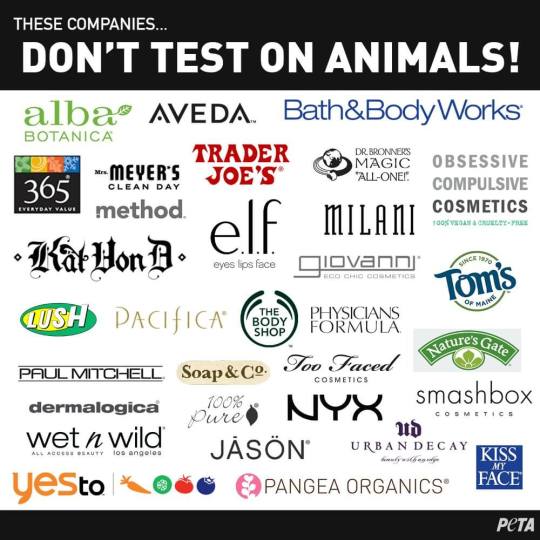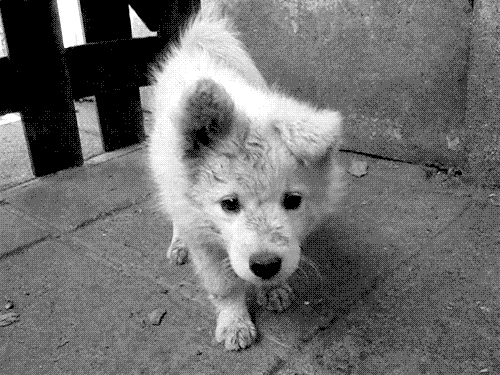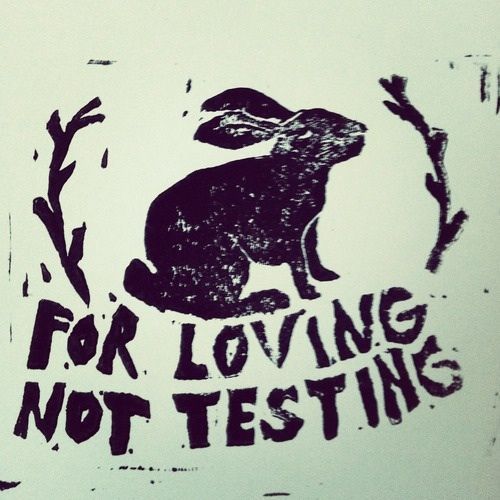Text
Animals Used in Classrooms
Freestyle 2
Each year over 20 million animals are dissected, used for medical exercises, and cut apart for training. Discovered by PETA, biological supply companies, which sell bodies and parts for dissection use in classrooms. These supply companies obtain the animals from shelters or strays from the street. Cats, pigs, rabbits, and frogs are the most commonly used animals in education. These supply companies drown and preserve the bodies for later use. Frogs are used animal in dissection in many high school classrooms after they are captured from their habitat. In emergency medical training pigs, dogs, and sheep are used to tear apart and perform on. These animals are sometimes pumped with preservatives and stuck in small cages to be shipped while they are still alive. Undercover investigations show the inhumane mistreatment all of these animals suffer.
The use of animals in classrooms doesn't benefit the student as well as the animal. “Situations are numerous where administration penalized or made a student uncomfortable for not wanting to participate in dissection classes.” Many students have asked for alternatives to dissection and have not been given the option. There has even been court cases over the continuing issue in schools. Instead of teaching respect and compassion for animals, schools are teaching the opposite by making dissection a requirement. Computerized images of animals have been created and have proven to have more educational benefits. Most students feel more comfortable learning on computers as well. Overall, dissection and use of animals for education is a waste of a life.
(Source)
0 notes
Text
Animals in Space
Freestyle 1
Animal experimentation in labs is the most common form of inhumane, cruel testing procedures. Most people forget that animals being launched into space for experimentation is another form of animal cruelty. Since the 18th century live animals have been launched into space in aircraft. Many of the animals that are put into space die on impact, complications, and some don't even make it into space yet. Albert I, a rhesus monkey, was launched into space in 1948 but died on the way up due to suffocation. Albert II was launched shortly after and made it into space but died on the way back due to impact. Altogether 32 monkeys have been sent to space and very few returned alive. (Source)
On November 3rd, 1957 the first animal to orbit space was recorded. Laika, a soviet dog, orbited space aboard the Sputnik 2. Laika was a stray dog found on the streets and scientists believed she would be the best dog to use because she was immune to cold weather and starvation. She was trained to be in a small space by being forced to live in a cage and lick a nutrient gel. On the way back Sputnik 2 burned up in the upper atmosphere and Laika’s life support system gave out, resulting in her death. (Source)

(Source)
0 notes
Text
Academic Article Review
Future Perspectives
“Alternatives to animal testing: current status and future perspectives” This article was written by Manfred Liebsch, Barbara Grune, Andrea Seiler, Daniel Butzke, Michael Oelgeschla ̈ger, Ralph Pirow, Sarah Adler, Christian Riebeling, and Andreas Luch. It was published on May 24, 2004. This article contains information gathered on alternatives of animal testing by ZEBET, an organization that is dedicated to the 3R’s of animal testing. The 3R’s were created by R.L. Burch and W.M.S. Russell, commonly used when talking about reasoning for alternatives, they stand for: Replacement, Reduction, and Refinement. Replacement stands for any other object or thing that can be used in place of animals for testing. Reduction stands for anyway that result in the use of less animals during research. Refinement stands for a procedure that can be done to minimize the pain or distress caused to animals.
This article is based around my research question and has helpful information about the alternatives to testing. It shows a lot of statistics and charts, which makes some points easier to understand. In this article it showed statistics and included facts about animal testing in other countries. The main subject of the article is alternatives so it supports my research question.
0 notes
Text
Reader Insight
Review and Evaluation
“Thanking The Monkey: Rethinking The Way We Treat Animals” written by Karen Dawn and published on April 28, 2008. This book had many sections about animal rights not just experimentation, but I only focused on the experimentation part. I did enjoy this book and found it very helpful, however, the author only focused on one side of the argument which is against testing. According to Dawn “If I were an animal who died in one of these tests, the one person I would like to see kept strong by those medicines would be the person fight to end superfluous animal testing”(221). I think she put too much of her opinion in and not enough of the pro-testing side. She includes many illustrations and cartoons that relate well to the topic which makes the visual creative. Also, she includes quotes from other articles that relate to what she is talking about and puts them in the notes in the back of the book. I think it is well written and she includes almost all of the small topics in animal testing, just adds too much of her opinion. Anyone would benefit from reading this book because it does educate you further into the facts about testing. In the back of the book she has a small section of recommended resource groups and links to there websites, which is helpful to see other animal activists opinions.
Link to purchase: (source)
My research question “Should animals be used for scientific testing?” did connect to this book well because the author has the same opinion as me on the issue.
Overall, I found this book very helpful and would recommend it to another person to use as a resource.

(source)
0 notes
Text
Documentary
Alternatives!
In the documentary, “Bye Bye Guinea Pig” (2016) filmed by Aude Farve, displays many different alternatives used by researchers in labs. Aude Farve, a journalist, travels the country and meets different scientists that explain that many results that are found through animal testing are inaccurate and that the alternatives are more reliable. This documentary persuades the audience using ethos and pathos. “Bye Bye Guinea Pig” is targeted towards animal activists.
In this document multiple animal researchers were interviewed by Aude Farve. She traveled across the globe in search for reliable responses from scientists. The first scientist she interviewed was Professor Fredrick Nom Saal, a biologist, at the University of Missouri. Saal explained to her that animal testing is very specific and it is hard to achieve correct results. Furthermore he included one of his experiments, he gave a rat a birth control pill dose and the pill did not affect the rat, however it did result in the male babies to have less sperm count. I believe that the purpose of interviewing him was to show that a pill that works a certain way on humans, works a completely different way on rats. She then traveled to Scotland to interview Professor Malcolm Macleod, a neurologist at the University of Edinburgh. He explained that many animal experiments are “inaccurate, biased or plain useless”. He explained that out of 600 drugs tested on animals only 1 worked on humans. Macleod made a statement about LUSH cosmetics being “cruelty free”, while examining their label realized that most ingredients of the product are in-fact tested on animals. I think Malcolm Macleod was interviewed because his many facts and knowledge about the usefulness of testing appealed the audiences ethos. Farve then traveled to the Center for Alternatives to Animal Testing in Germany to meet with Professor Thomas Hartung. Professor Hartung spent many years in search of alternatives for animal testing and has been very successful with the results. He further explains that many rabbits were killed each year due to human fever medication testing, he created a test that uses human blood instead of live rabbits. In my opinion, Professor Hartung made the biggest impact on this documentary by showing how he dedicated his life to saving animals in labs.
Should animals be used for scientific testing? After watching the documentary “Bye Bye Guinea Pig” I believe that alternatives to animal testing are more reliable and efficient. It relates to my question by providing many reasons that animals should not be used for testing. I believe that all the scientists in the documentary were telling the honest truth because it reveals that even they don’t agree animal lives are worth the scientific gains. In my opinion this documentary had many reliable sources and provided very helpful information.
0 notes
Text
Buy Cruelty-Free!!!!!
All types of beauty products that don't test on animals!

(Source)

(source)

Look for this symbol to ensure the product is cruelty free!
(Source)
0 notes
Photo


BRANDS THAT TEST ON ANIMALS VS BRANDS THAT DO NOT TEST ON ANIMALS
95K notes
·
View notes
Text
Care and Compassion
Is Animal Research Ever Ethical?
John P. Gluck, a former animal researcher, writes “Regretting My Animal Research” on September 2nd, 2016. Gluck states that the mental and physical pain primates go through during experiments isn’t worth the small percent of scientific gains. This article is trying to persuade the audience using real stories from a scientist with experience in animal testing. “Regretting My Animal Research” is targeted towards people that do not believe animal testing is moral.
Standardization:
P1: Primates go through mental and physical pain during research and testing.
P2: Less than one half of one percent of primate testing has resulted in useful medical information.
P3: Primates are living things with a personality and shouldn't be coerced to be subjects for data.
Thesis: The pain and long term distress primates go through during testing has more disadvantages than advantages.
Mar Sanchez, a chairwoman of the committee on animals in research, responds to John P. Gluck’s argument in “Regretting My Animal Research” on Sept.12, 2016. Sanchez states in her argument that many people benefit from primate research, for example people with Parkinson's disease now see improvement through brain stimulation which was discovered through primate research. This article is trying to persuade the audience using scientific data. “Is Animal Research Ever Ethical” is targeted towards people with health challenges.
Standardization:
P1: Many people benefit the life-changing medical advances.
P2: People with Parkinson’s disease now see improvement through brain stimulation discovered through primate research.
Thesis: Scientist, Mar Sanchez, argues that the pain and distress of animals is worth the data discovered in labs.
John P. Gluck makes a good point about how many animals are killed and tortured for the small amount of health benefits that are discovered. Gluck was an animal researcher until he realized the damage done to more than 70,000 primates living in labs all across the united states. I agree with his statement on a primate in his lab “then I realized that to him G44 was an individual with a unique personality, not just an animated object that produced data points.” He also argues that the federal government should form ethical principles for animal research, which I strongly agree with.
0 notes
Text
Rhetorical Précis

(source)
Pussycat Doll, Kimberly Wyatt, says “Be a Doll for Animals” created by Michelle Kretzer on January 20th, 2012 and images by Karl Grant. The advertisement uses a celebrity to symbolize the ugly side of beauty happening in labs. This ad is persuasive and appeals the the audience’s emotions by putting wounds of what an animal in a lab would have on a human. This ad targets anyone that uses or buys animal-tested cosmetics.
In this advertisement, created by PETA, the two different sides of Kimberly Wyatt make a huge statement and put animal testing into perspective. This advertisement depicts a grotesque side of Kimberly with marks and wounds but also shows her beautiful face full of makeup. The quote on the ad saying “The Ugly Side of Beauty” symbolizes the animals in labs behind closed doors suffering for our beauty products. The grotesque side of her uses reds and bright colors drawing the audience’s attention to the wounds on her face. The direction of how she is standing in the picture of her with wounds shows she's inferior to the picture without wounds. Kimberly Wyatt is an American singer and best known as a former member of the Pussycat Dolls. Kimberly also has a cruelty-free cosmetic line. PETA’s use of a celebrity targets and has a stronger impact on people who look up to them. This add is simple yet symbolizes a huge statement about animal testing.
0 notes
Text
Help the helpless
What is animal experimentation?
“Animal testing, also known as animal experimentation, is the use of non-human animals in experiments that seek to control the variables that affect the behavior or biological system under study.” Live animals are forced to undergo something that is likely to cause them pain and lasting harm, awaiting to be free. Animals such as dogs, cats, rabbits, mice, and many more are suffering every day. Almost 26 million animals a year are killed from scientific or commercial testing. Some animals including birds, reptiles, and mice aren’t counted for under the AWA(animal welfare act). Tests are run everyday, trying out new medications, pesticides, cosmetics, cleaning products, vaccinations, and many more.
(source)
(source)

(source)
What is the AWA?
The AWA stands for Animal Welfare Act. This act was passed in 1966 and has specific rules concerning animal testing. The AWA defines animal as any warm blooded non-human animal, excluding cold blooded animals, farm animals, and birds. “The AWA requires that each research facility develop an internal Institutional Animal Committee (more commonly known as an Institutional Animal Care and Use Committee, or IACUC) to represent society's concerns regarding the welfare of animal subjects." The AWA does not cover experiments of animals, it strictly covers housing and transportation for the animals being researched on. Animal research is funded by the National Institutes of Health (NIH) and US Public Health Service.
(source)

Early History
Research on live animals has been used for medical reasons since 500 B.C., descriptions of live dissections have been found in Ancient Greek writings. Scientists such as Aristotle, Herophilus, and Erasistratus practiced on live animals to discover bodily functions. “Vivisection (dissection of a living organism) was practiced on human criminals in ancient Rome and Alexandria, but prohibitions against mutilation of the human body in ancient Greece led to a reliance on animal subjects.” Some scientists such as Aristotle believed that animals did not feel pain but others disagreed, Theophrastus believed it was an provocation to the gods to vivisect on live animals. Galen, a roman physicist and philosopher, preformed public dissections of live animals as a form of entertainment. Galen had no compassion or sympathy for animals he dissected. “Galen believed that animal physiology was very similar to that of human beings, but despite this similarity he had little sympathy for the animals on which he experimented.” Galen taught his students to vivisect animals without any mercy or empathy and said that the "unpleasing expression of the ape when it is being vivisected" was to be anticipated. Philosophers such as Descartes believed that animals were unable to consciously feel pain like humans could. Many ancient scientists had different outlooks on animal research just as scientists do today.
(source)
2 notes
·
View notes

